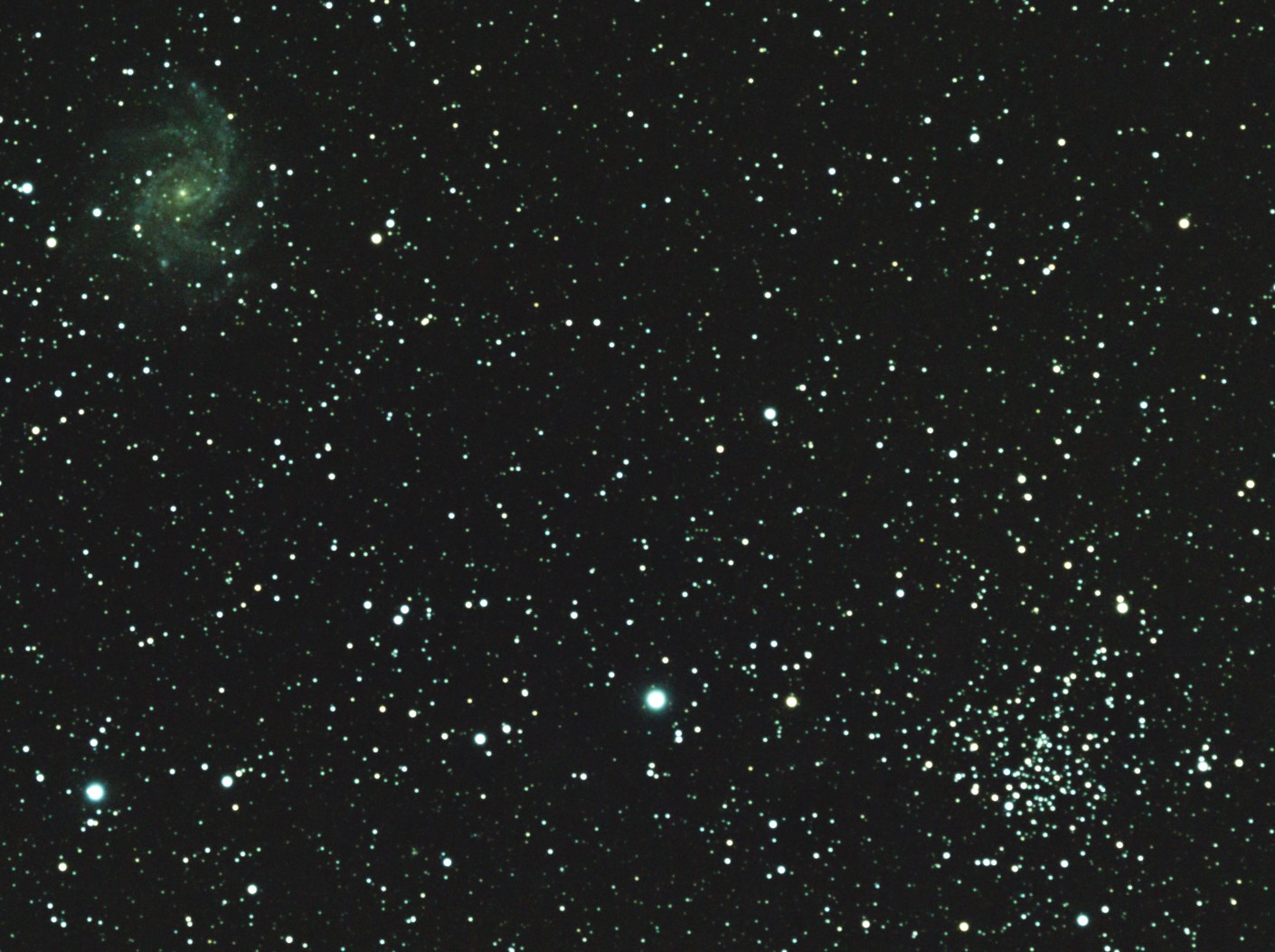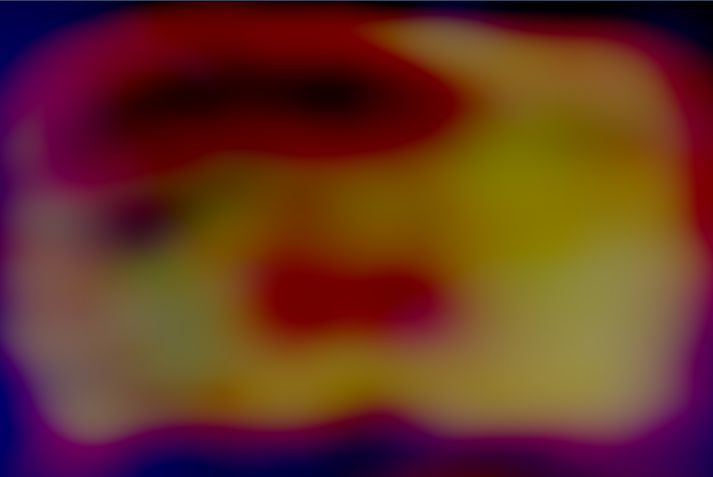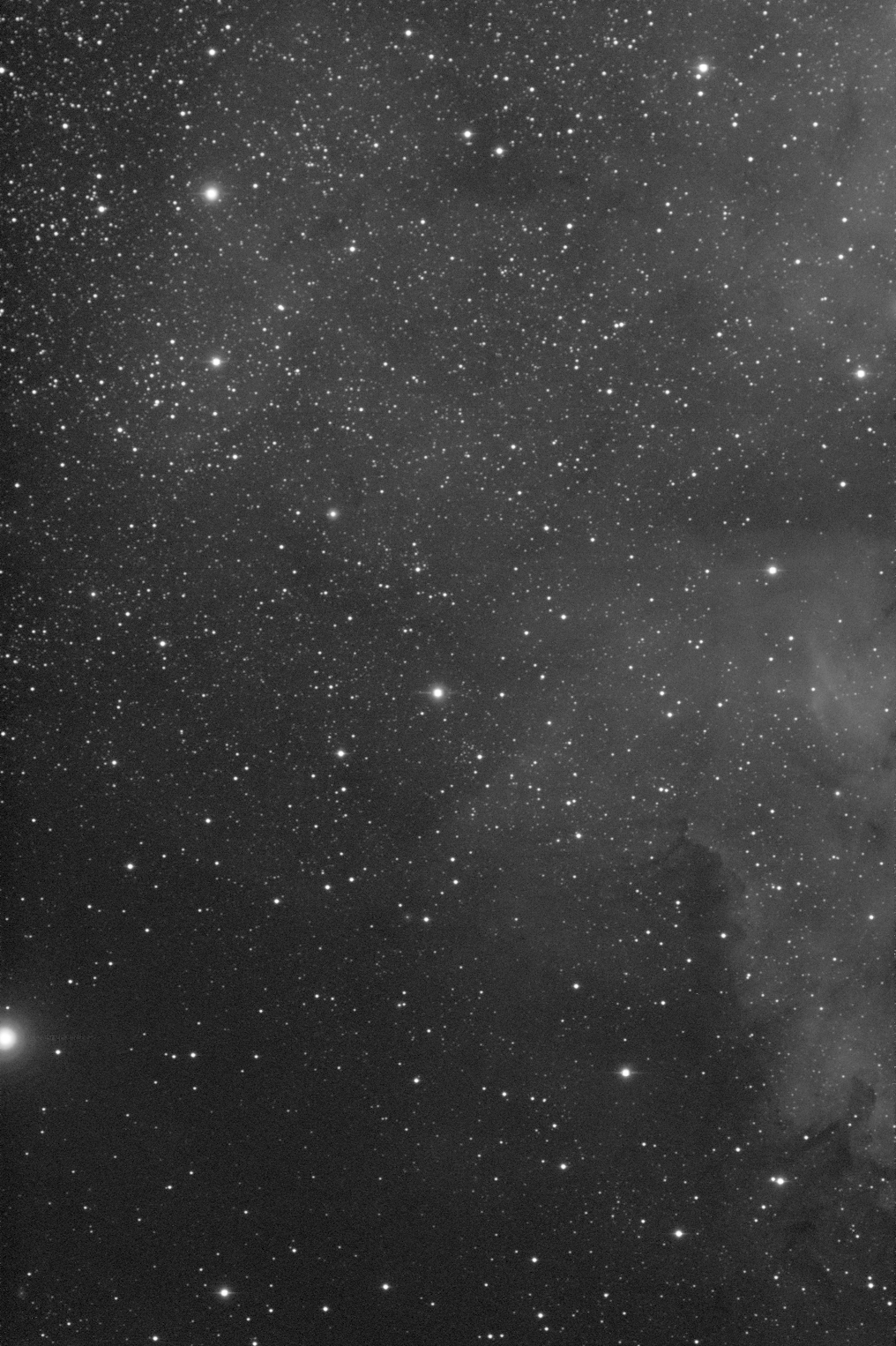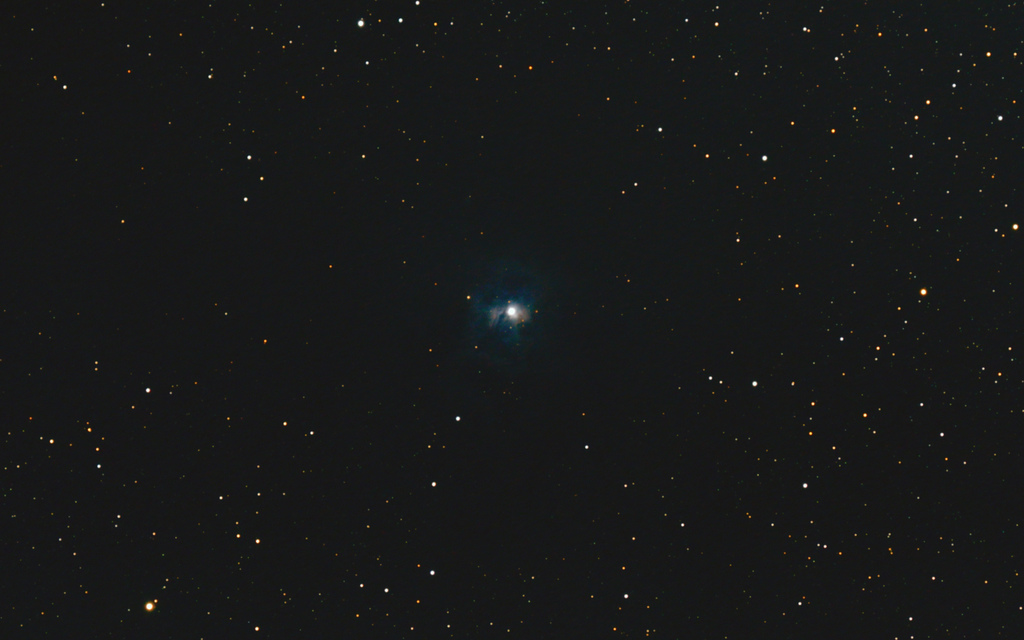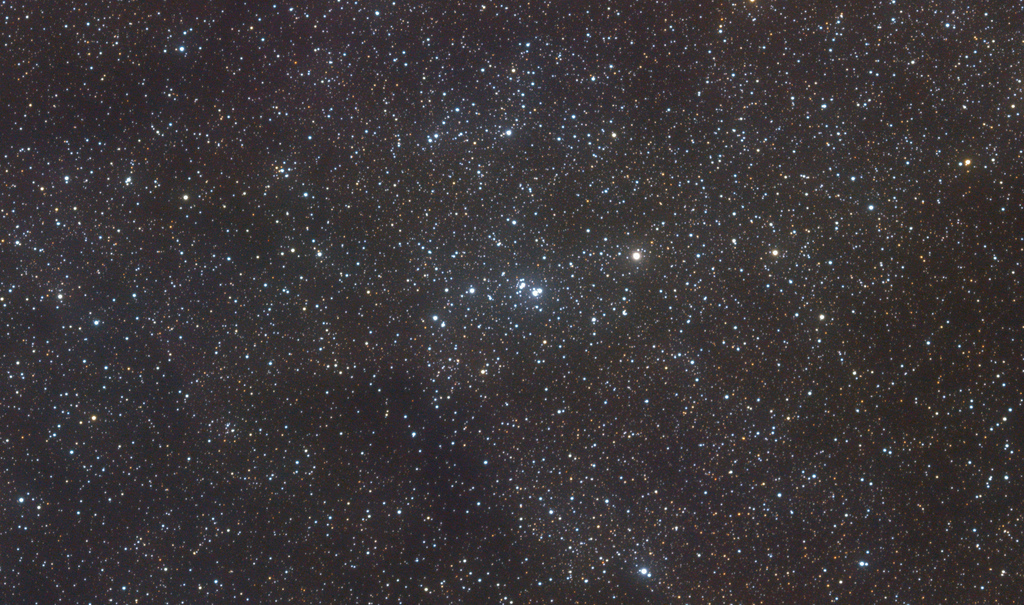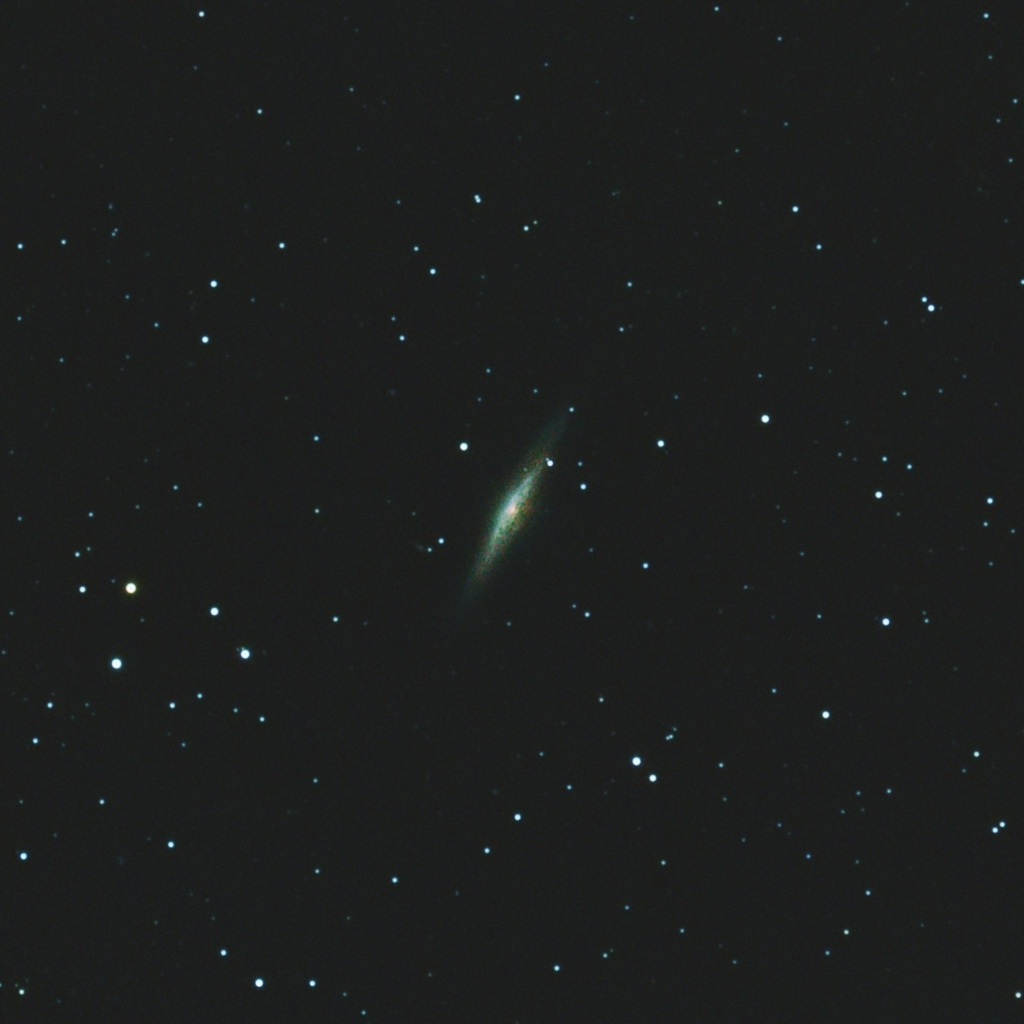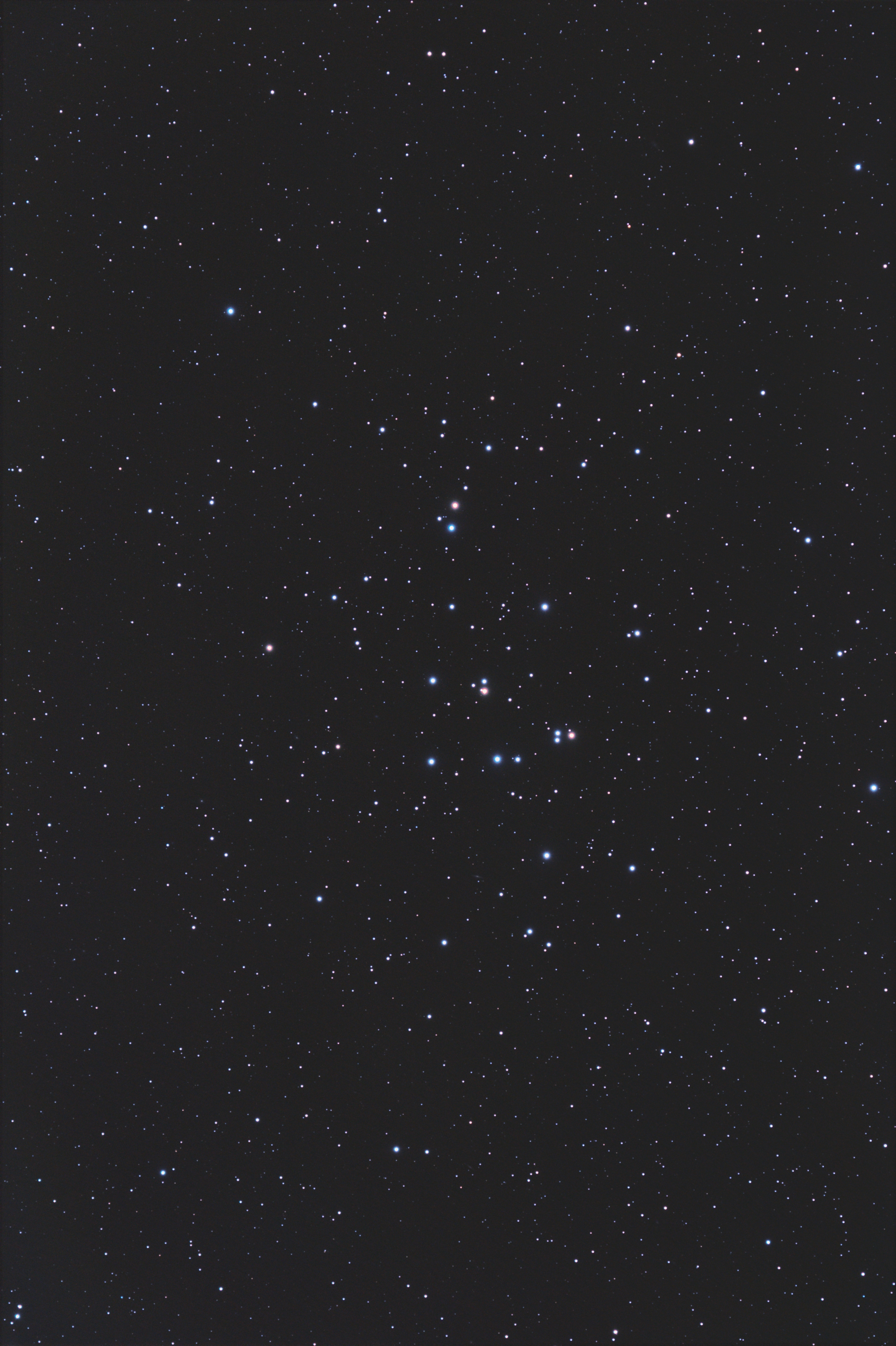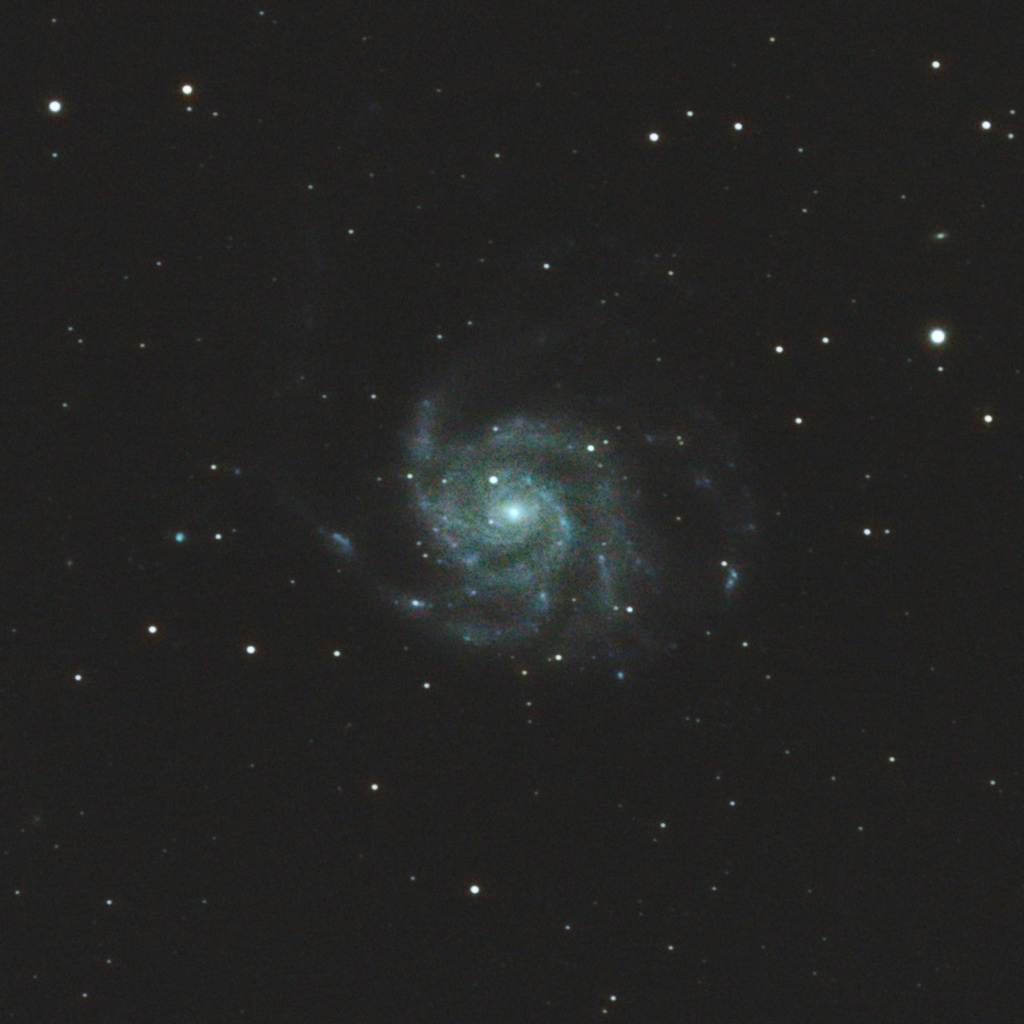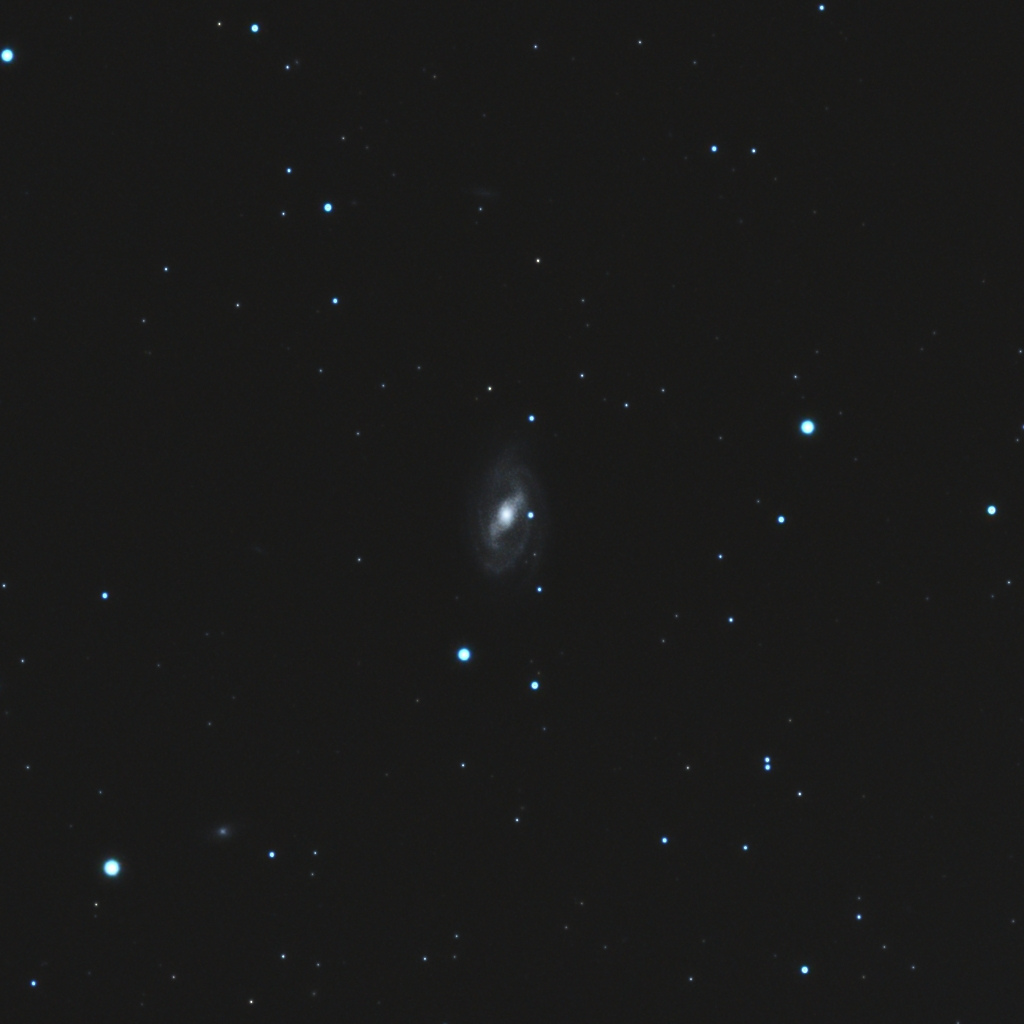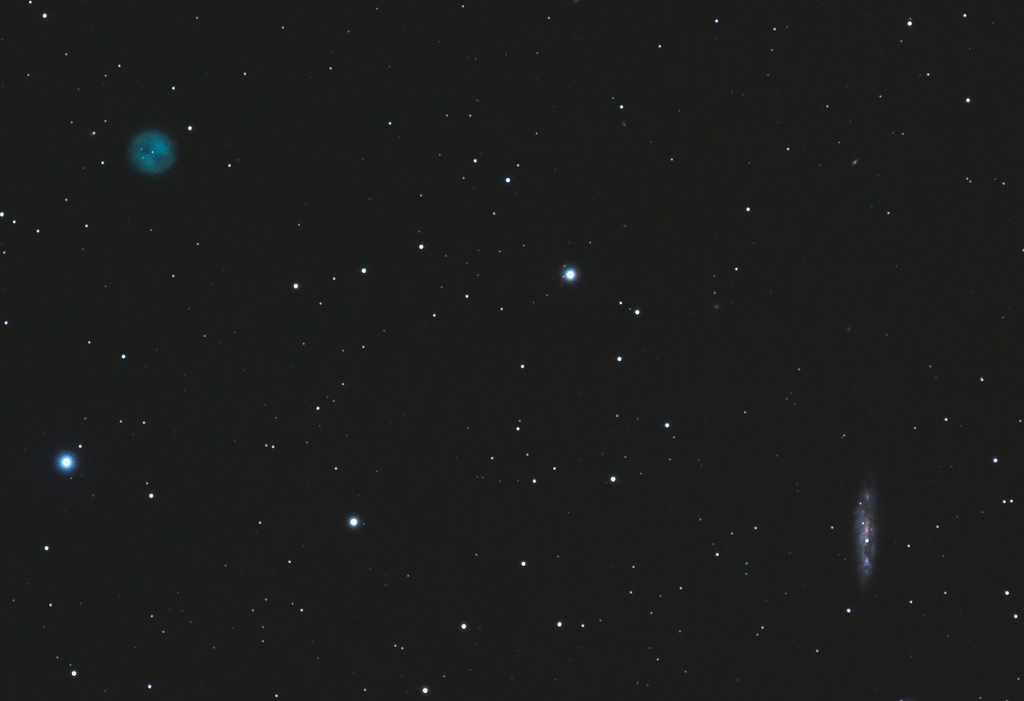NGC6946, aka the Fireworks Galaxy, owes its fancy name to being the galaxy in which the largest number of supernovae have been recorded. And that’s nine. Unfortunately my picture doesn’t show any, but the galaxy is framed with the nice and bright open cluster NGC6939.
The Fireworks Galaxy is quite near, at only ten million light-years, but lies behind clouds of dark nebulae in our Milky Way, since it’s pretty much on the galactic plane.
Curiously, I haven’t found a lot about NGC6939 online; I suppose it means that it’s a rather unremarkable open cluster.
This image is a crop because I had trouble with my flat frames (I accidentally shifted the focus knob) and therefore you can see defects and artifacts on the full frame. The night wasn’t particularly transparent, and 3.6 hours of exposure proved to be barely enough to show the galactic core.
And when there’s so little data to work with, stretching the histogram to the limit will show defects that are beyond the extreme care I can take in calibrating the frames, such as the non uniform sensitivity of the CMOS chip.

